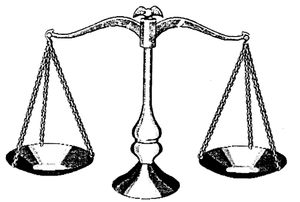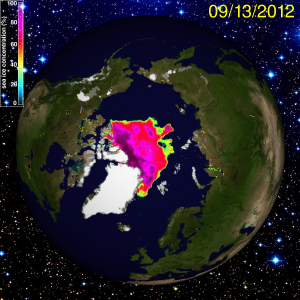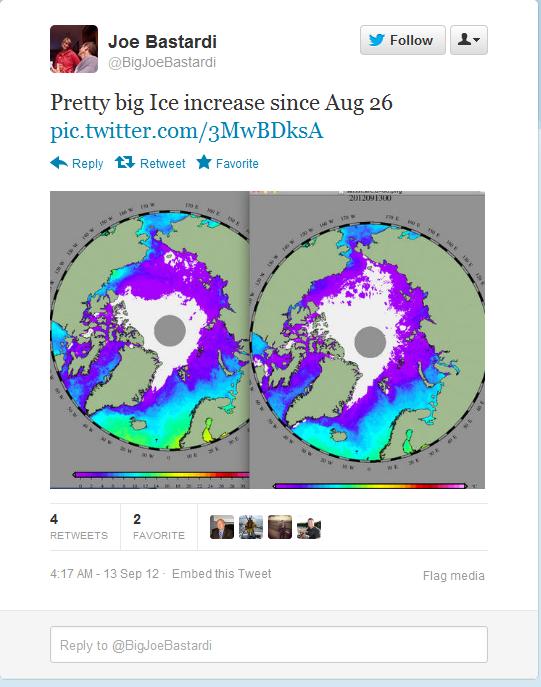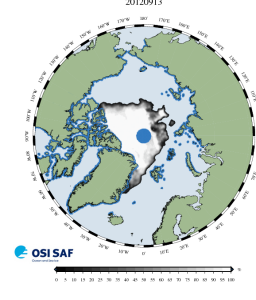Archive
You are currently browsing the (Pseudo-)Science Blog blog archives for September, 2012.
Sep
27
Sep
25
Mind Reading
Perhaps James Randi will have to give up his million dollars?
Some good lessons in there for us all.
Sep
24
Sep
22
Canadian News Story on Melting Arctic Ice
A few points to take note of:
1. Although the rhetoric about scientists' "tossing out everything they thought they knew," is over the top, it is an important reminder that scientific uncertainty goes both ways.
The deniers point to the uncertainty in scientific predictions to argue that we should do nothing. But scientific models might also be underestimating the actual dangers of climate change.
Indeed, given that science tends to be a fairly conservative enterprise (more evidence is demanded for claims of drastic changes), it might even be more likely that scientists will underestimate danger than overestimate it.
2. Starting at 3:45 there's mention of the very important (but little discussed) point that as the arctic warms, the permafrost will melt and give off methane (which is a powerful greenhouse gas), which will lead to even more global warming. As the climate starts to change, we can expect it to continue to change, faster and faster.
Sep
18
False Balance (Fallacy of the Day)
 The fallacy of false balance is based on the assumption that giving "both sides" an equal treatment is the fairest and least biased way to present a controversial account.
The fallacy of false balance is based on the assumption that giving "both sides" an equal treatment is the fairest and least biased way to present a controversial account.
This is often seen in journalism in a "he said, she said" presentation of a story. Spokespeople from "both sides" are quoted, and the journalist leaves it to the reader/viewer to decide where the truth lies.
This is a fallacy when it gives the impression that two sides are equally worthy of consideration even though they in fact are not.
For example, having a quotation from a evolutionary scientist "counterbalanced" by a quotation from a creationist may give the impression that both sides are reasonable and supported by scientific evidence. In fact, however, evolution is a well-supported scientific theory that is accepted by all scientists working in the field, whereas creationism is a form of denialism. Presenting the two as being on equal footing misrepresents the reality of the situation.
Another even more more politically charged example is that of the language used to report on instances of torture committed by the United States. Government officials used euphemisms like "enhanced interrogations" to describe procedures, such as water-boarding, that have long been understood to be instances of torture. (For example, a water board is included in the display of torture devices at the Tuol Sleng Genocide Museum. See images here.)
Most journalists avoided using the term "torture" when speaking of water-boarding performed by U.S. intelligence agents because they decided that using the term would amount to taking a "side" in a political "debate" and journalists should avoid this in their reporting.
For example, the NPR ombudsman argued,
[T]he role of a news organization is not to choose sides in this or any debate. People have different definitions of torture and different feelings about what constitutes torture. NPR's job is to give listeners all perspectives, and present the news as detailed as possible and put it in context.
The vast majority of NPR's listeners disagreed however. They argued that "torture" means torture, and that the mere fact that a president and his lawyers asserted that water-boarding wasn't torture didn't make it so.
Treating a politically motivated redefinition as a "side" in a legitimate "debate" is an example of how an attempt at balance can prevent the fair presentation of facts.
Update: Nice discussion of the problems with "teaching the controversy" in a pdf (pp. 25-29) found here.
Sep
14
Joe Bastardi: Denialist?
Joe Bastardi is a weather forecaster who is "skeptical" of the claim that the burning of fossil fuels is leading to dangerous global warming.
Is it skepticism or is it denialism?
Neven over at Arctic Sea Ice Blog posts the following tweet from Bastardi:
August 26th is about when 2012 passed 2007 as the year with the least amount of ice ever recorded. The pictures sure make it seem like the ice has recovered quite a bit since then, don't they?
But anyone who's been paying attention to arctic sea ice would find this implausible, since sea ice area and sea ice extent are still decreasing even now in mid-September. If we go to DMI's Centre for Ocean and Ice website (where Bastardi got his image), we find the following image" of yesterday's sea ice concentration:
No sign of the "Ice increase" mentioned in Bastardi's tweet. Why is that?
Well, a big part of the explanation seems to be that Bastardi's tweeted pictures are not pictures of ice at all. They are instead depictions of the surface temperature of the arctic sea. Ocean water freezes at zero degrees Celsius (that's why Celcius set the zero of his scale there -- since salt water is widely available), but this doesn't mean that the temperature readings depicted give an accurate account of where ice is and where it isn't.
If you want to know where the ice is, you need to look at satellite images and see where there's ice and where there's water. Which is exactly what the scientists do to generate the extent and concentration maps like the one above. (Neven has a nice animation of the difference between August 26th and September 13th here.)
A few further tidbits on Bastardi to help us evaluate whether he should be counted as a denialist:
Here Bastardi argues that the fact that submarines have been able to surface at the North Pole in previous decades shows that current sea ice decline is nothing unusual. What's missing from his article is a discussion of the relationship between holes in the ice and the amount of overall ice that is present in the arctic. Notice, for example, in the below concentration map, that there is very little dark purple.

Those dark purple patches are the only regions that have 90% to 100% ice coverage. There is currently a whole lot of room for submarines to surface.
Also notice this comment by Bastardi where he claims, "By all counts, so-called “greenhouse gases” cool the earth and the atmosphere." This betrays a profound misunderstanding of basic physics.

